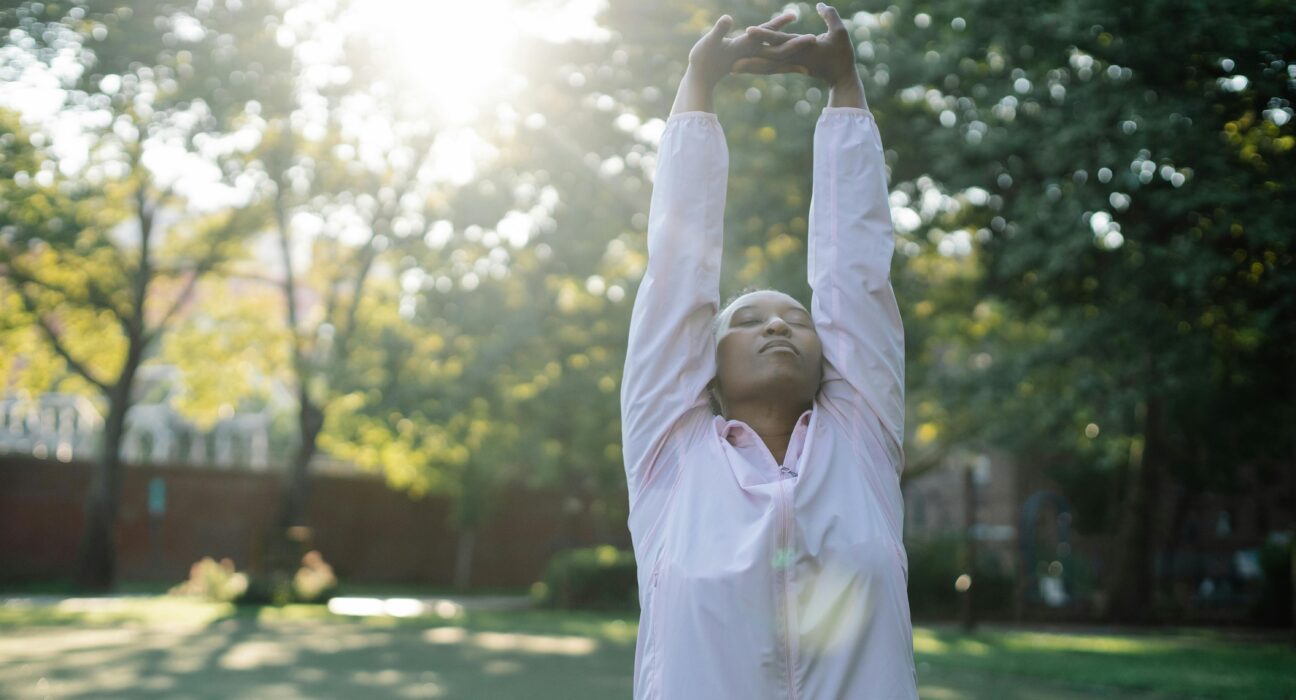Golden light spills across the room. The first rays stretch through your window, warming your face and easing you into wakefulness. This simple moment isn’t just pleasant—it’s powerful. Morning sunlight nudges your body’s natural clock into rhythm, setting off biological changes that fuel your energy, lift your mood, and help you sleep later on.
The science is clear: sunlight switches on your alertness by dialing up serotonin, a chemical linked to feeling positive and focused. That boost doesn’t just help you mentally; it guides your whole day, from sharper thinking to steadier emotions. Exposing yourself to bright, early light is a habit within everyone’s reach—no fancy equipment required. These benefits start with a single decision: open the curtains wide and let the morning in.
The Science: How Morning Sunlight Sets Your Internal Clock
Stepping outside into the early light isn’t just a way to greet the day. When natural rays touch your eyes, they send powerful signals to your brain—nudging your body into action, setting mood, and prepping you for better sleep later on. Let’s look closer at how this daily light show shapes everything from your alertness to your hormones.
Sunlight and Your Circadian Rhythm
 Photo by Bill White
Photo by Bill White
Your body runs on a timer called the circadian rhythm—a 24-hour cycle that tells you when to feel alert and when to wind down. The main conductor for this rhythm is light, especially sunlight in the morning.
Here’s what happens:
- Morning light enters your eyes. Specialized cells at the back of your eye, called photoreceptors, pick up natural light (you don’t even have to look right at the sun—just being outside is enough).
- A signal travels to the brain’s master clock. This “clock,” known as the suprachiasmatic nucleus, sits above the optic nerves and tells every cell in your body what time it is.
- Your body wakes up. In response to this signal, the brain eases off melatonin (the sleep hormone) and increases its wake-up hormones. You feel naturally more alert and focused.
Missing out on bright morning light can throw this inner clock off balance. Jet lag, late nights, or too much time indoors can make mornings feel groggy and evenings restless. Just 20-30 minutes of natural morning sun often helps get things back on track. For deeper insight, see how sunlight exposure improves sleep and alertness.
Hormones and Mood: The Serotonin-Melatonin Connection
Morning light does more than reset your sleep timer. It sets up your feel-good chemicals for the day.
- Serotonin gets a lift. When sunlight touches your skin and enters your eyes, it sparks higher serotonin levels. Serotonin is linked to better mood, focus, and a sense of well-being.
- Melatonin is set for later. The same sunlight that stops melatonin in the morning actually helps your body start making more at night, setting you up for deep, restful sleep.
Without enough daylight, serotonin levels can drop, leading to low mood and sluggish thinking. Over time, it may even contribute to seasonal blues. That’s why experts suggest soaking in some sunshine, especially in the early hours, to keep both mood and sleep steady. For more, check out this breakdown on how light regulates mood and behavioral state and read about how changes in sunlight affect your mood.
A touch of light in the morning isn’t just a pleasant ritual—it’s your body’s natural reset button for a brighter, steadier day.
Morning Sunlight’s Impact on Physical and Mental Health
The soft radiance of the morning sun does more than brighten your day. It wakes up your senses, sharpens your mind, and sets your body’s gears in motion. Letting that golden light touch your skin and eyes in the first hours of the day delivers benefits you can feel—from restful nights to a steadier mood.
Better Sleep and Sharper Focus: Show how morning light leads to deeper night rest and sustained daytime alertness.
 Photo by Ketut Subiyanto
Photo by Ketut Subiyanto
Exposing your eyes and skin to morning sunshine is like flipping a switch on your body’s daily rhythm. The first light of day sends a powerful cue—wake up now, and get ready to move. This early sun helps set your inner clock, keeping you alert through the day and ensuring that, when night comes, your body knows it’s time to rest.
- People who step into natural light in the morning report falling asleep faster and feeling more refreshed after sleep.
- Studies show that even 20 minutes outside soon after waking can help you focus, learn, and think more clearly throughout the day.
- A lack of morning sun can make concentration feel harder and may leave you dragging through the afternoon.
Current research confirms this link: sunlight exposure enhances cognitive function and mental clarity. If your mornings feel cloudy, try starting with a walk outside—your brain and body both stand to gain.
Boosted Mood and Emotional Resilience: Discuss evidence that morning sun exposure reduces symptoms of low mood and supports well-being.
Catching the sunrise isn’t just a peaceful ritual—it’s a practical tool for a brighter, steadier outlook. When sunlight filters through your eyes, it triggers the release of serotonin, a natural chemical that lifts your mood and supports emotional balance.
- Multiple studies have found that people who get morning sunlight show fewer symptoms of low mood, anxiety, and stress.
- The simple act of basking in early light can lift the fog of seasonal blues and help you bounce back from daily challenges.
Regular morning sun builds up your emotional reserves. You find more patience, better perspective, and a steadier sense of well-being. For a deeper look at the science, see this overview of sunlight’s positive association with mental health and how light exposure eases depression and anxiety.
Vital Nutrients: Vitamin D and More: Explain how sun exposure helps create vitamin D, and why that’s important for the immune system and body strength.
Morning sunlight is your body’s most natural way to create vitamin D—a key nutrient for health. When UV rays from the sun touch your bare skin, they trigger the process that makes vitamin D. This nutrient isn’t just for strong bones; it powers your immune system and helps every cell in your body perform at its best.
- Just 5-10 minutes of morning sun can set off vitamin D production for the day.
- Vitamin D is essential for fighting off illness, building bone strength, and supporting muscle health.
- Low vitamin D levels are linked with lower energy and increased risk of chronic conditions.
Research confirms that UV exposure is the primary way to boost vitamin D, and even quick doses of sunlight can get the process started. Learn about the health benefits of sunlight and vitamin D and how regular sun exposure keeps your immune system strong.
Letting morning light in isn’t just tradition—it’s a key ingredient for clarity, calm, and lasting health.
Easy Ways to Soak Up Morning Sunlight
Early rays streaming through your window can turn a sluggish morning into a moment of renewal. Making space for morning light doesn’t have to mean a total shake-up. With a few simple tweaks, you can build a daily habit that puts you in step with your body’s natural clock, even when life is hectic or the sky is gray.
Building Sun-Savvy Habits
 Photo by Tim Samuel
Photo by Tim Samuel
Getting that golden glow each morning is easier than you might think. The key is to look for small pockets of time and simple routines you can pair with a bit of sunlight.
Try these changes and notice how quickly they become second nature:
- Open your blinds or curtains as soon as you rise. Let the sun spill in and brighten up your living space. Natural light signals your brain to wake up and helps set your mood for the day.
- Step outside for breakfast or your first cup of coffee. Even a few minutes on your porch or balcony can make a difference. If you have a yard, wander barefoot for some added grounding.
- Take a short walk as part of your morning routine. A ten-minute stroll—even just up the street and back—can leave you feeling clear-headed and energized.
- Stretch in a sunbeam. Roll out a yoga mat where the sun streams through your window and do a few gentle stretches while you soak up the warmth.
You don’t need perfect weather for these habits to work. Sunlight, even filtered through clouds, is still effective at signaling your body to wake up and get moving. For more tips on weaving morning sunlight into your day, check out this guide on getting sunlight in the morning and practical hacks for adding more morning sunlight.
Making Sunlight Work for Your Routine
If you work night shifts or live in a busy city with tall buildings, catching more daylight can feel like a puzzle. But with a few adaptations, you can still get the benefits.
Here’s how to make it fit your life:
- Use bright, artificial light if sunlight isn’t available when you wake. Turning on as many lights as possible after waking helps alert your brain and set your daily rhythm. This is especially helpful in winter or on early shifts. More on balancing artificial light and sunlight at this expert resource.
- Try light boxes designed for mood and alertness. These devices mimic daylight and can help support your energy and mood when real sunlight is hard to find—proven effective for shift workers and during seasons with limited sun. See studies on lighting interventions for shift workers and light exposure strategies for different work patterns.
- Schedule outdoor breaks whenever you can. Step outside during lunch, commute on foot for part of your trip, or find a sunny spot to pause—even five minutes counts.
- Design your morning routine around the daylight you do get. Move closer to windows, rearrange your breakfast spot, or keep your exercise by a sunlit window.
If your schedule or location limits your exposure, doing what you can with what you have is better than none at all. A few mindful changes can help you claim all the benefits of morning light, no matter what your day—or your city skyline—looks like.
What to Watch Out For: Sun Safety and Timing
The gentle warmth of morning sun feels like a fresh start, but taking care of your skin is just as important as reaping sunlight’s rewards. Early rays cast long shadows and offer a softer glow, but even these gentler beams call for smart, simple protection so you can enjoy the benefits without regret later in the day.
 Photo by Kampus Production
Photo by Kampus Production
The Best Times for Sun Safety
Morning sunlight is typically safest right after sunrise until about 10 a.m. During these hours, the sun’s UV rays are weaker, so your risk of skin damage or sunburn is much lower than later in the day. When the sun is overhead—from 10 a.m. to 2 p.m.—UV rays are at their peak strength, making sunburns more likely and increasing long-term skin risks.
To make the most of morning light:
- Enjoy outdoor time before 10 a.m. or after 4 p.m.
- Stick to the shade or wear a wide-brimmed hat if you must go out midday.
- Remember: morning light is enough to set your clock and lift your mood, so there’s no need to bask all day.
For a complete rundown on ideal timing and simple protection, check the FDA’s guide on sun safety tips for every skin type.
Sunscreen and Skin Protection
Even when the light feels gentle, protecting your skin should become second nature. Morning rays may be milder, but UV exposure still adds up over time. Safeguarding your skin helps prevent burns, early aging, and more serious damage later in life.
Keep these basics in mind:
- Use a broad-spectrum sunscreen with at least SPF 30 if you’ll be outside more than 15 minutes, even in the morning.
- Apply sunscreen 30 minutes before stepping out and reapply every two hours if you continue to enjoy the outdoors.
- Cover skin with lightweight, long sleeves or sun-protective clothing when possible.
- Don’t forget sunglasses to shield your eyes from UV rays.
Johns Hopkins Medicine shares a set of easy-to-follow sun safety best practices, which highlight the value of sunscreen and protective gear for everyone—regardless of skin tone.
Signs You’ve Had Too Much Sun
While catching morning rays can help your mood and energy, it’s easy to stay outdoors a bit too long, especially on cool or breezy days.
Look for these early signs of overexposure:
- Skin feels warm, tight, or tender to the touch.
- Redness appears even if you don’t see a full sunburn yet.
- Fatigue or slight headache sets in after time outside.
If you notice these, head indoors or find shade, and drink water. Taking a break can prevent sunburn from ruining the positive effects of your morning routine.
For extra information on sunburn prevention—like how to check the UV index and stay protected by timing your sun time—visit this overview on staying sun-safe in summer and beyond.
Why Timing Matters for Sunlight Benefits
The timing of your sun exposure shapes both its benefits and its risks. Early-morning light works like a natural wake-up call with less harsh UV, perfect for your mood and sleep without adding much risk of sunburn.
Late afternoon is the next safest window, offering similar perks for your skin and rhythms. Too much midday sun, on the other hand, can turn what should be a daily boost into a setback for your skin and health.
For more details on why the early sun is safest and how to enjoy it, see WebMD’s slideshow on sunlight and health effects across the day.
Making morning sunlight a healthy habit isn’t just about when you go outside, but how you take care of your skin while enjoying those golden hours. Simple steps make a big difference, giving you all the upside—and none of the sunburn.
Conclusion
A week of morning sunlight can work wonders. Stepping into that first light brings a sharp jolt of energy, clears your mind, and lifts your mood from inside out. Sunlight at dawn quiets restless thoughts and wakes your body in the gentlest way—no alarms needed.
Starting your day with golden rays isn’t just pleasant; it’s a simple, powerful rhythm that anyone can claim. Try it for seven days: let the sun meet your skin, watch your focus sharpen, notice how sleep comes easier.
Each sunrise is an invitation to recharge—without cost or barriers. Thank you for reading and sharing these moments. How would your days look with this light leading the way? Give it a try, and let the sun do the rest.








